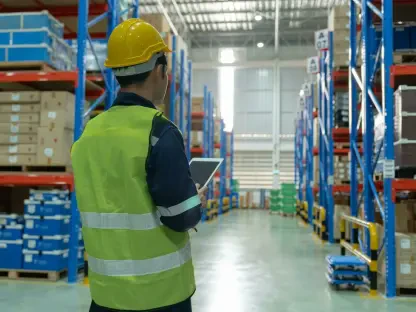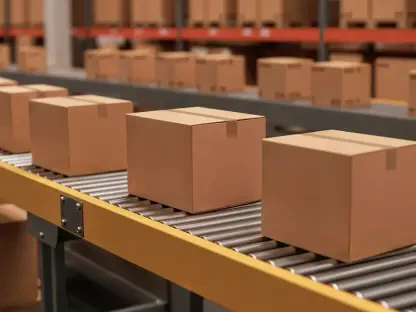In an era where technology transforms the way we perceive mobility, the partnership between Hyundai Motor Group and Incheon International Airport Corporation aims to set a new benchmark in sustainable and intelligent transportation. Rohit Laila, with decades invested in logistics, supply chain, and pioneering innovations, sheds light on this collaboration, explaining why Incheon Airport is poised to become a leader in digital transport innovation. The initiative brings AI-powered EV charging robots to life, marking a major shift towards an automated, eco-friendly future.
Can you explain the significance of the MoU signed between Hyundai Motor Group and Incheon International Airport Corporation?
The Memorandum of Understanding signifies a visionary collaboration that marks the onset of transformative technology at one of the world’s most advanced airports. By joining forces, Hyundai and IIAC lay the foundation for integrating groundbreaking robotics and AI solutions into airport infrastructure, setting a global precedent for how modern transport hubs can evolve.
What are the key objectives of this collaboration in terms of airport infrastructure?
The collaboration aims to redefine airport infrastructure by integrating AI-powered automatic charging robots. This initiative not only enhances operational efficiency but also sets Incheon Airport on a trajectory to become a leader in digital transport innovation, with smart systems that cater to mobility needs seamlessly and sustainably.
How does this initiative position Incheon International Airport as a leader in digital transport innovation?
This project positions Incheon International Airport at the forefront of digital transport innovation by showcasing cutting-edge technology capable of transforming ordinary processes. Utilizing AI-driven systems, the airport transitions into an ‘Aviation AI Innovation Hub,’ which solidifies its standing as a pioneer in adopting futuristic mobility solutions.
How will the AI-powered automatic charging robots (ACRs) improve the EV charging experience at the airport?
The ACRs offer a fast, efficient, and seamless charging experience by minimizing human intervention and eliminating potential errors. They operate autonomously, detecting vehicles and locating charging ports, thus accelerating the adoption of electric vehicles in an environment that’s increasingly busy and congested like airports.
What roles do Hyundai’s robotics and AI capabilities play in this project?
Hyundai’s expertise in robotics and AI is crucial as it drives the development of these ACRs. From the precise navigation of vehicles to the rigorous safety standards they’ve achieved, Hyundai’s technological prowess ensures these robots not only function optimally but also meet international certification requirements, allowing their deployment beyond Korea.
How does Incheon Airport’s operational experience contribute to this collaboration?
With decades of operational experience, Incheon Airport provides valuable insights into managing high-traffic areas. Its expertise in logistics operations ensures the seamless integration and adaptation of AI-powered solutions, which will boost efficiency and pave the way for enhanced passenger services.
What makes Incheon International Airport a suitable testing ground for AI-based charging robots?
Incheon Airport offers a dynamic environment suited for testing advanced technology, thanks to its status as a tech-forward, high-traffic international hub. The airport’s infrastructure and operational complexity make it an ideal location to demonstrate AI-driven systems capable of handling diverse scenarios.
Can you discuss the broader implications of transitioning Incheon into an ‘Aviation AI Innovation Hub’?
Transforming Incheon into an ‘Aviation AI Innovation Hub’ has global implications by setting an example of adopting technology to redefine mobility experiences. It showcases the airport’s commitment to sustainable practices and innovation, leading the charge in a global movement towards smart mobility ecosystems.
What makes Hyundai’s ACRs distinct from ordinary plug-in chargers?
Hyundai’s ACRs differentiate themselves through advanced AI and robotics that facilitate autonomous charging without human intervention. Their adaptability to various environments and compliance with strict safety certifications mark them as a sophisticated upgrade over traditional plug-in chargers.
What safety certifications have Hyundai’s ACRs achieved, and why are they relevant?
The ACRs have obtained Korea Certification (KC) and EU’s CE marking, ensuring they meet high safety standards required for international deployment. These certifications are crucial as they confirm the reliability, safety, and readiness of the technology for adoption in different regions globally.
How does the autonomous operation of the ACRs minimize human involvement and error?
By leveraging AI and robotics, the ACRs reduce dependency on human operation, thereby mitigating the risk of errors. This autonomous function streamlines the charging process, offering a fast and precise service tailored for the demanding pace of airport operations.
In what ways can the ACRs be customized to function in different environments such as airports and seaports?
The ACRs can be tailored to suit various physical and operational settings, allowing them to function seamlessly across airports, seaports, and rail terminals. Their adaptability and customizability ensure they can meet specific site requirements efficiently and effectively.
How does this project align with global airport sustainability trends?
The project is aligned with worldwide efforts toward sustainability by reducing reliance on conventional fuel services. Through minimizing emissions and operational costs, these innovations foster an environmentally-friendly ecosystem and contribute to the global pursuit of sustainable mobility.
What are the expected benefits in terms of operational cost reduction and emission cuts at Incheon Airport?
Implementing these AI-powered solutions will streamline EV operations and reduce the need for fossil fuels, directly lowering operational costs and emissions. This positions Incheon Airport as a forward-thinking leader in sustainable transport practices.
Can you elaborate on the role IIAC will play in supporting the pilot project?
IIAC contributes physical space and facilitates data collection, ensuring comprehensive real-world testing of the ACRs. Their role in providing operational resources and overseeing usability testing is invaluable as Hyundai fine-tunes the robots to meet practical demands.
How will feedback from real-world testing be used to refine the robots?
Feedback from real-world testing will be pivotal in adjusting and enhancing the performance of the ACRs. Hyundai will leverage this information to refine functionalities, ensuring optimal operation and adaptation before full-scale deployment.
What are the plans for global deployment of these ACRs beyond Korea?
The strategic vision extends globally, targeting ports, train stations, and other major transit hubs. Adaptations will be made to cater to specific regional requirements, ultimately expanding the reach and impact of these AI-powered solutions worldwide.
How will the ACRs be adapted for high-traffic areas and different regional requirements?
Creating region-specific AI behavior and developing robust maintenance protocols will ensure the ACRs perform reliably in high-traffic areas. By accommodating regional nuances, Hyundai prepares these solutions for diverse environments globally.
Are there any potential future cross-industry partnerships that Hyundai is considering?
Hyundai is exploring various cross-industry partnerships to integrate AI technologies with smart city infrastructure and public transport systems. These collaborations could broaden the application of their robotics innovations beyond the transport sector.
How does this initiative preview the future impact of automation and AI on transport logistics?
This venture exemplifies how AI and automation can drastically improve logistics efficiency, ushering in a new era where intelligent technology drives seamless, reliable, and sustainable transport solutions across global ecosystems.
How might these innovations influence the expansion of the global EV market?
By simplifying electric vehicle operations in busy transit zones, Hyundai’s innovations pave the way for widespread EV adoption. These enhancements in convenience and efficiency are crucial for scaling EV infrastructures worldwide.
What does it mean for the airports as we enter the ‘Incheon Airport 4.0 Era’?
Entering the ‘Incheon Airport 4.0 Era’ means redefining airport operations through intelligent, interconnected systems, setting new standards in service delivery and sustainability that will influence airports globally.
Can you provide any insights into Hyundai’s Robotics Total Solution (RTS) framework?
Hyundai’s RTS framework integrates smart parking and security systems, offering comprehensive solutions tailored for complex infrastructure needs. It embodies a holistic approach to embedding robotics into transport environments.
Are there plans to integrate these solutions with smart city infrastructure and public transport systems?
Hyundai is actively considering integration with smart city frameworks to expand the functionality of these robotics solutions, potentially transforming urban mobility dynamics and creating more interconnected transport ecosystems.
How do you see global transport ecosystems evolving with advancements like AI-powered charging robots?
The evolution of global transport ecosystems will be marked by increased automation, efficiency, and sustainability. AI-powered solutions will drive the development of smarter infrastructure that meets modern mobility needs while addressing environmental challenges.









